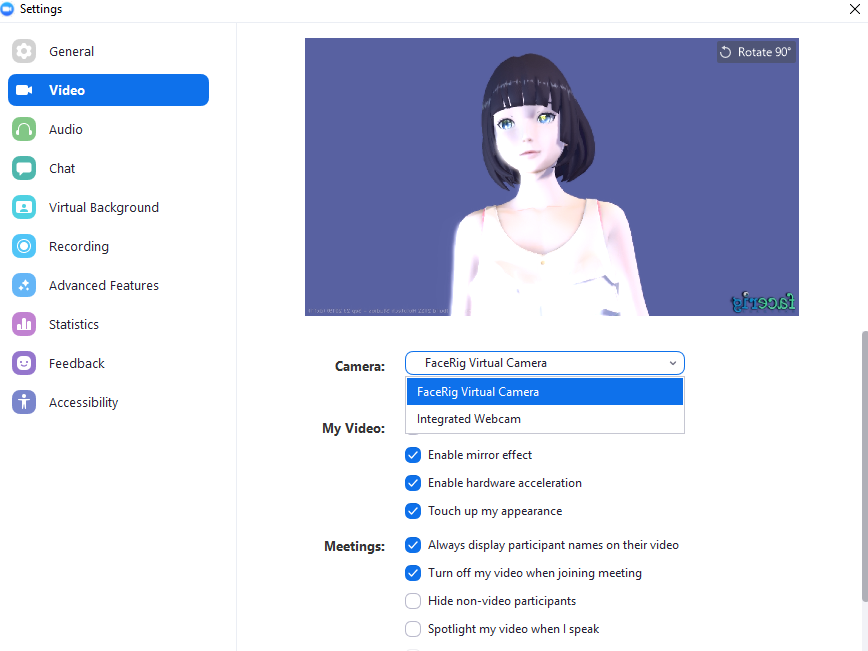If we’re all going to be locked down and locked into Zoom, then we might as well have a little fun with it.
Inspired by a posting in a Facebook group for Japanese academics to discuss COVID about using a vtuber (“virtual youtuber”) for Zoom lectures, I decided to investigate how I could use a virtual avatar in place of my plain old mug in a Zoom lecture. It turned out to be incredibly simple and relatively cheap.
The post on Facebook took me to this page (in Japanese) which explains some of the options, both for smartphones and computers. I ended up with Facerig, downloadable on Steam (a great excuse to install Steam on a work computer). It cost me $17.99 NZD.

Facerig uses the webcam on your computer to track your facial motions and maps them onto a computer generated character. The character will move its head, blink, and move its mouth in roughly the same way as your own face.

Facerig can be configured in “Broadcast” mode, which adds a virtual webcam device to your computer. This webcam can be selected in software like Zoom, which lets you transmit your virtual avatar instead of your face, along with your voice (which can be altered, though I haven’t tried this yet.)


Since I teach a course on the anthropology of science and technology, I’m thinking of using this software for one (or all) of my Zoom lectures once courses restart at the end of this month. Over the years I’ve played with the idea of dressing in different outfits for lectures to see how the students interact differently with me. This setup will let me test how they react to a talking dog.
[…] My attempts with Facerig have been fun, but I’ve learned of a tool that lets you use the technology behind deepfake videos to turn faces of famous people into your avatar on Zoom or Skype. […]